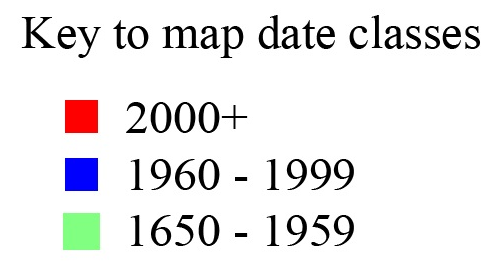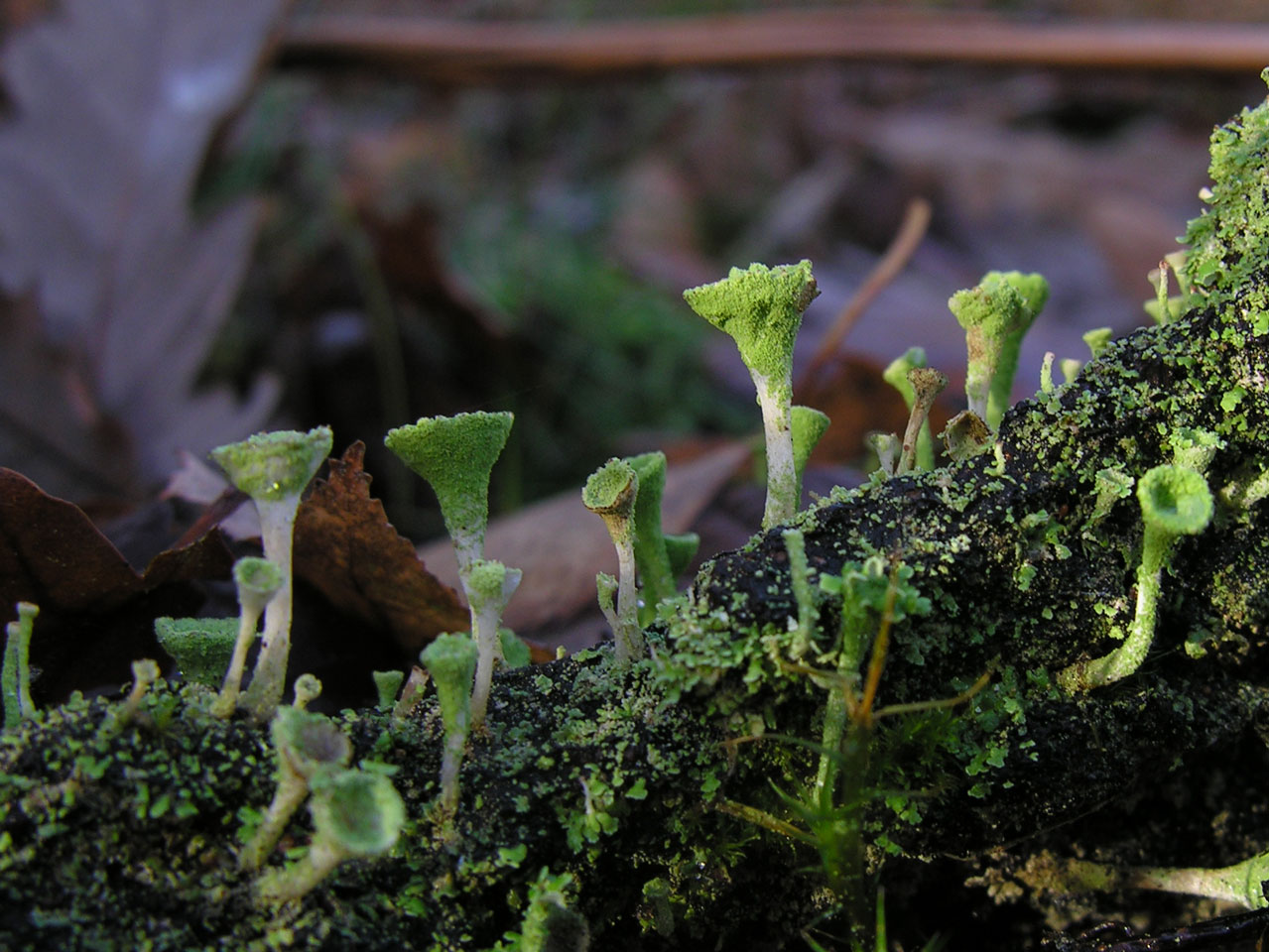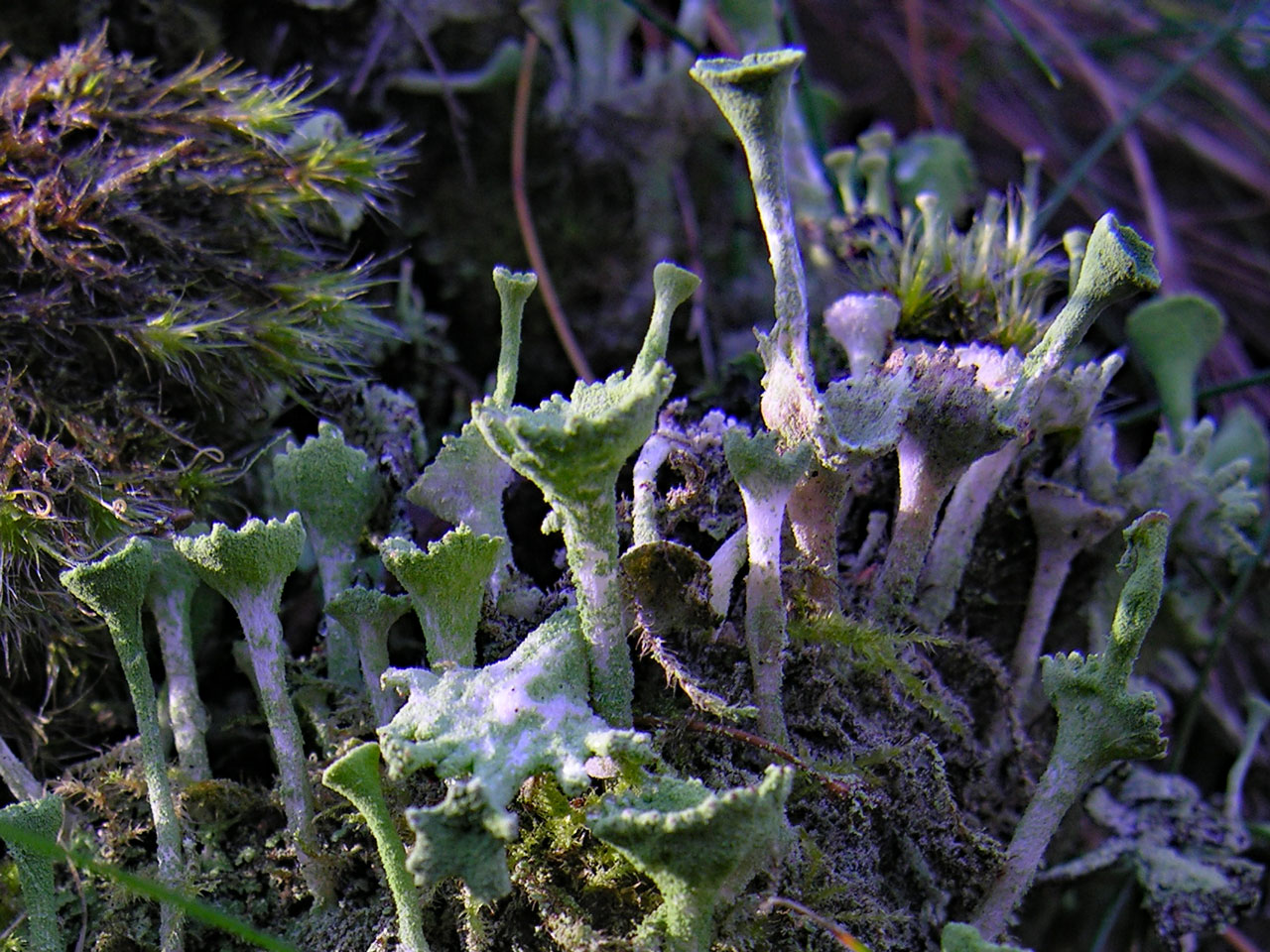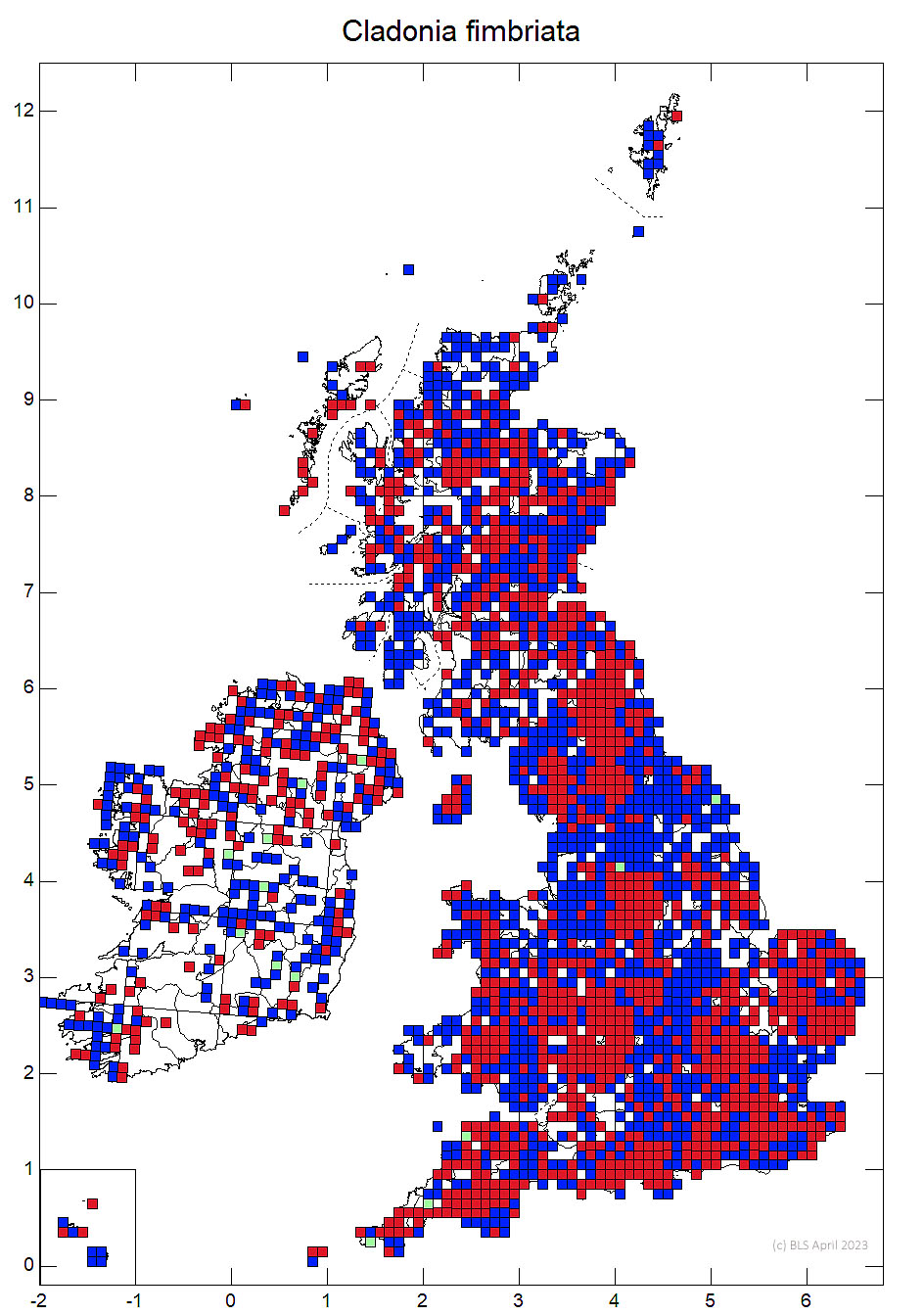Cladonia fimbriata
A neat Pyxie Cup with golf tee shaped podetia with fine green soredia and a white medulla when exposed. Very common but portably a bit over recorded in very acid habitats for C. cryptochlorophaea with slender podetia. The latter has a KC+ wine red (fleeting) spot test, is less finely sorediate and the exposed medulla often has a pinkish-brown tinge.
Podetia 0.5–1.5 cm tall, greyish to (rarely) brownish green; cups to 0.5 cm diam., margins ± regular, sometimes dentate, not proliferating, abruptly joined to a long stalk and appearing ± goblet-shaped, farinose-sorediate throughout, including the base and within cups. Basal squamules numerous but often rather small and inconspicuous, ± elongate and often incised. Apothecia and pycnidia brown, infrequent, on cup margins; apothecia sessile or shortly stalked. Thallus C–, K–, KC–, Pd+ orange-red, UV– (fumarprotocetraric acid).
Probably closely related to Cladonia chlorophaea. Characterised by the abruptly expanded regular goblet-shaped scyphi, the absence of cortication and entirely farinose-sorediate podetia. C. chlorophaea has more gradually tapering scyphi, and corticate or ± non- corticate podetia with coarsely granular soredia. A morph of C. cryptochlorophaea with slender podetia is frequent on acid bark and is often mistaken for C. fimbriata, but is KC+ wine red (fleeting). See also C. carneola (yellow-green podetia) and C. humilis (K+ yellow).
Often associated with mosses on recently disturbed sites, on rotten wood, in gardens and on old walls, occasionally in heathlands and dunes, absent from damp montane areas.

Common throughout Britain and Ireland.
Pino-Bodas, R., Sanderson, N., Cannon, P., Aptroot, A., Coppins, B., Orange, A. & Simkin, J. (2021). Lecanorales: Cladoniaceae, including the genera Cladonia, Pilophorus and Pycnothelia. Revisions of British and Irish Lichens 19: 1-45. Link
Text by N A Sanderson, based Pino-Bodas et al (2021)


